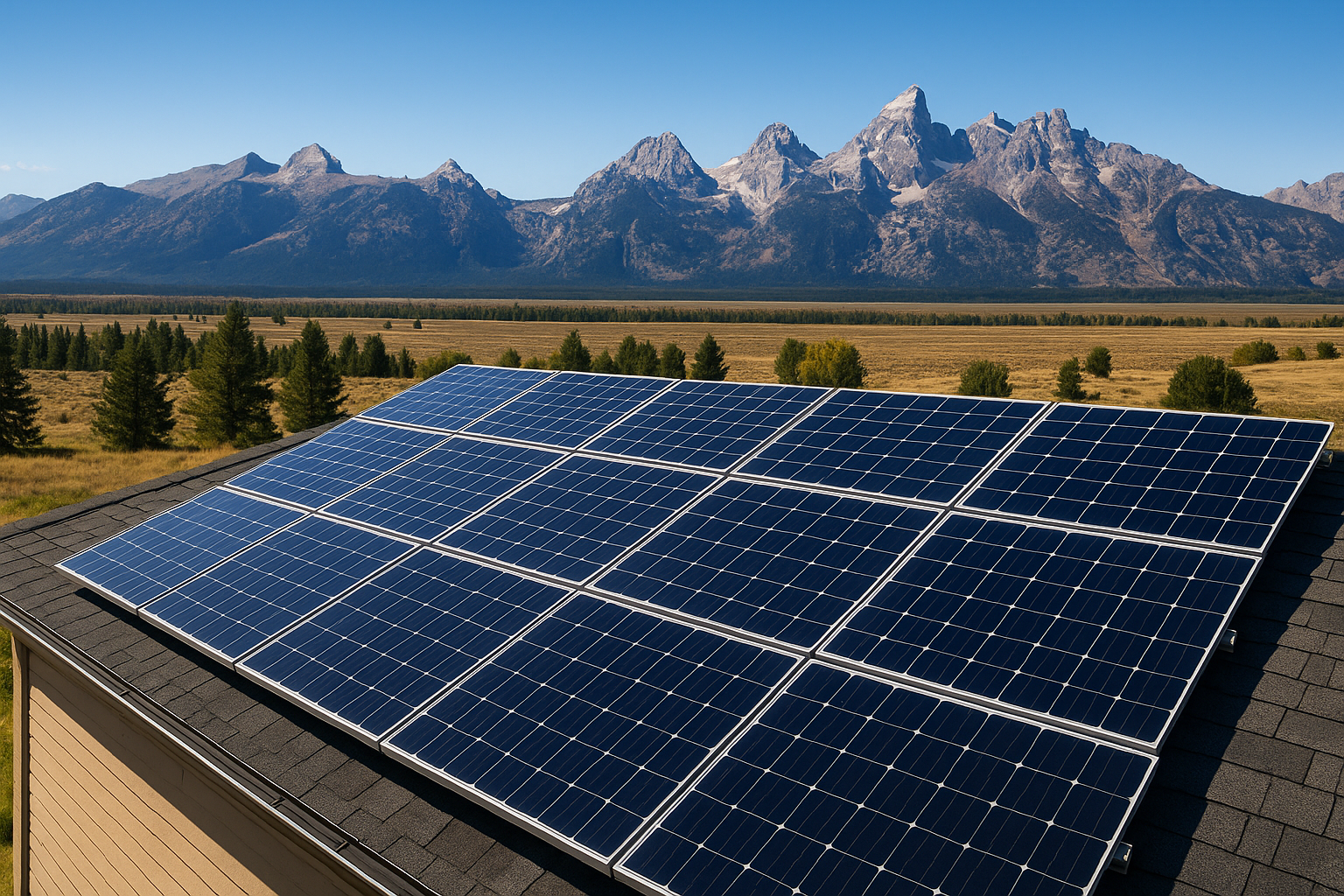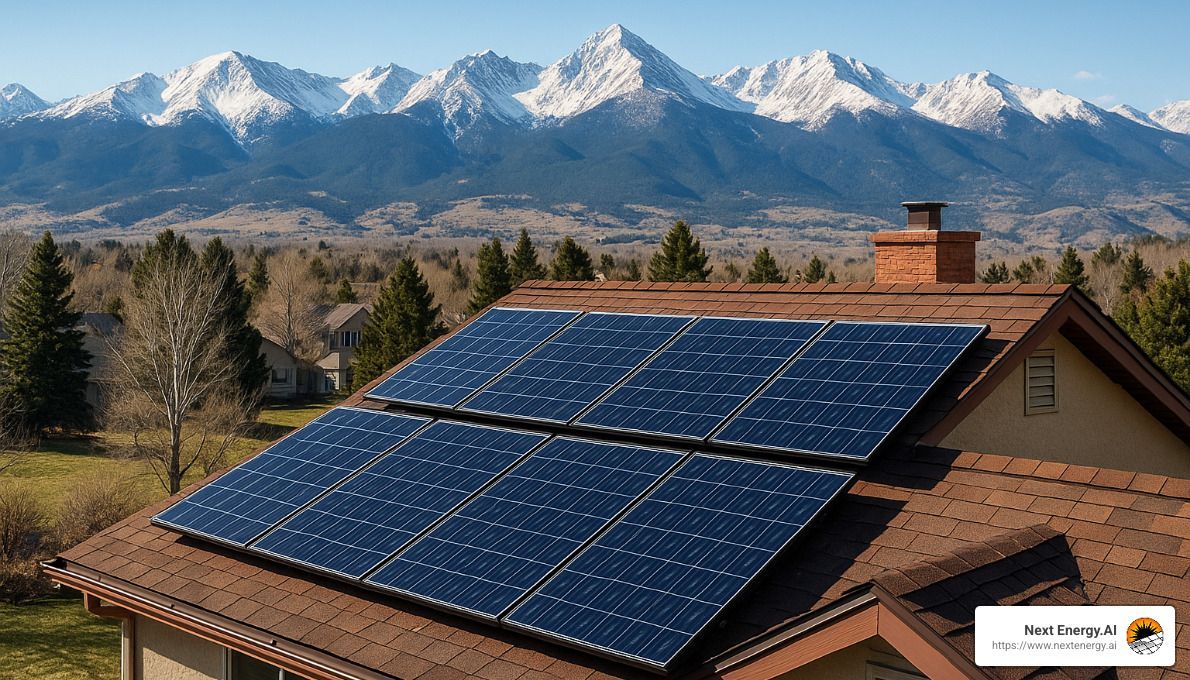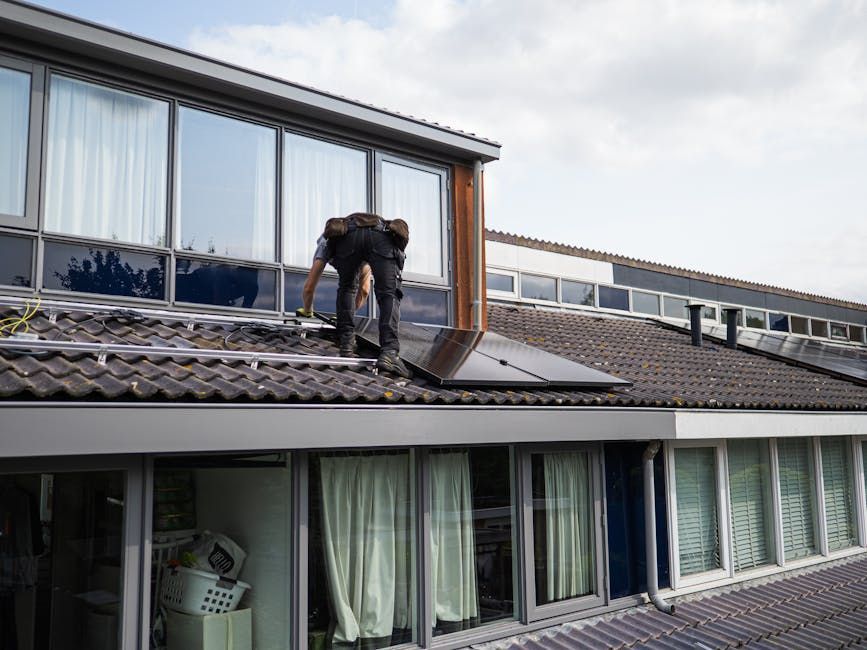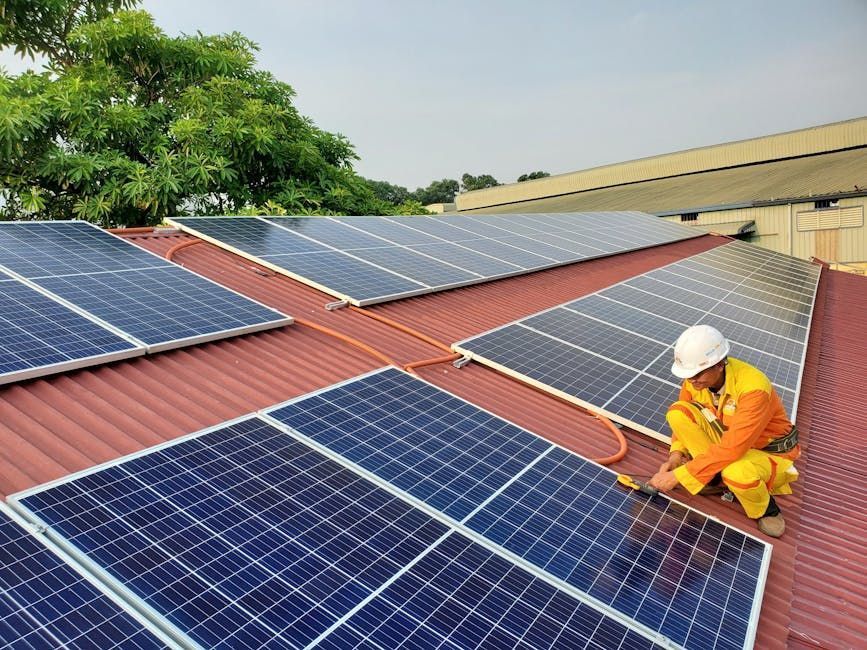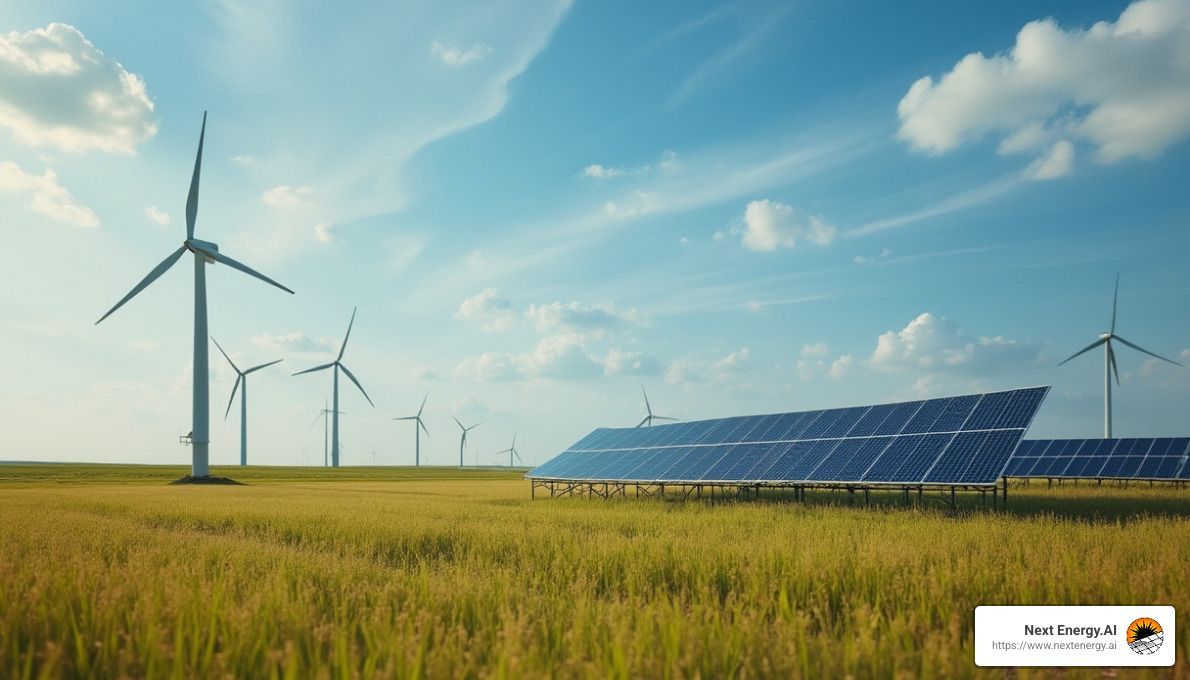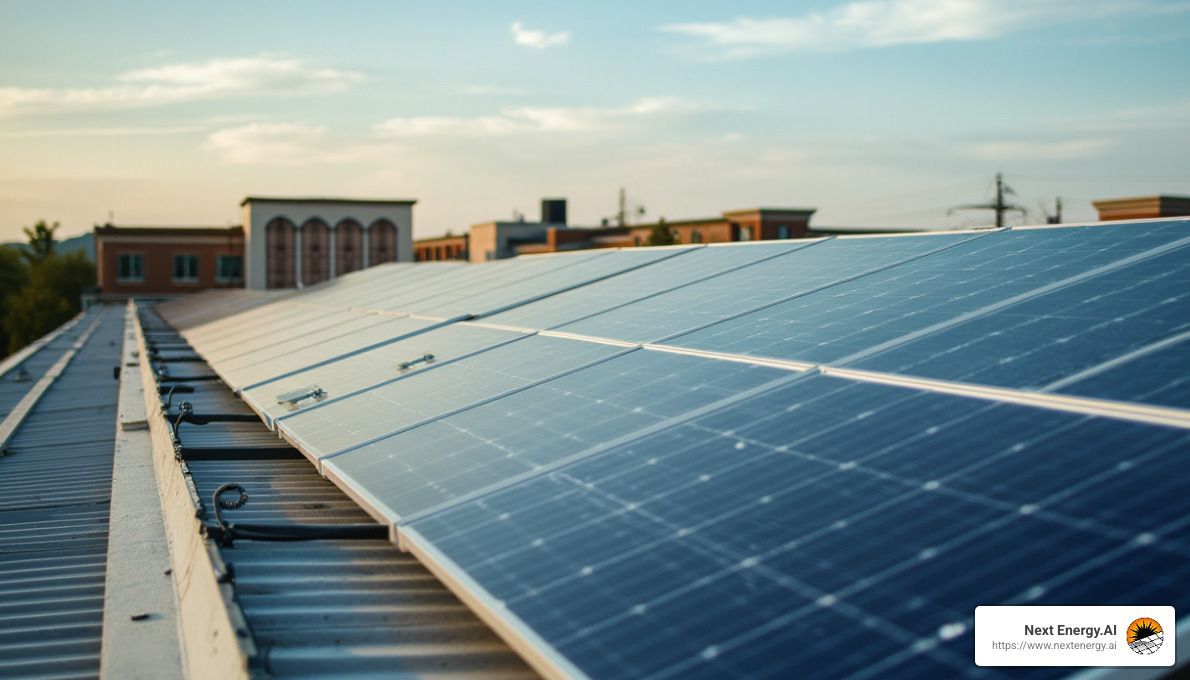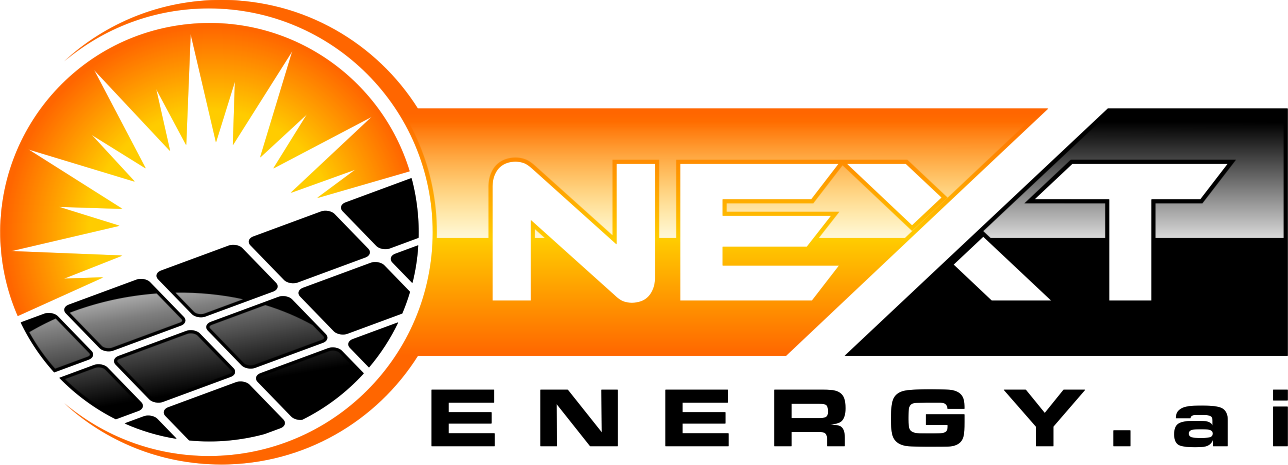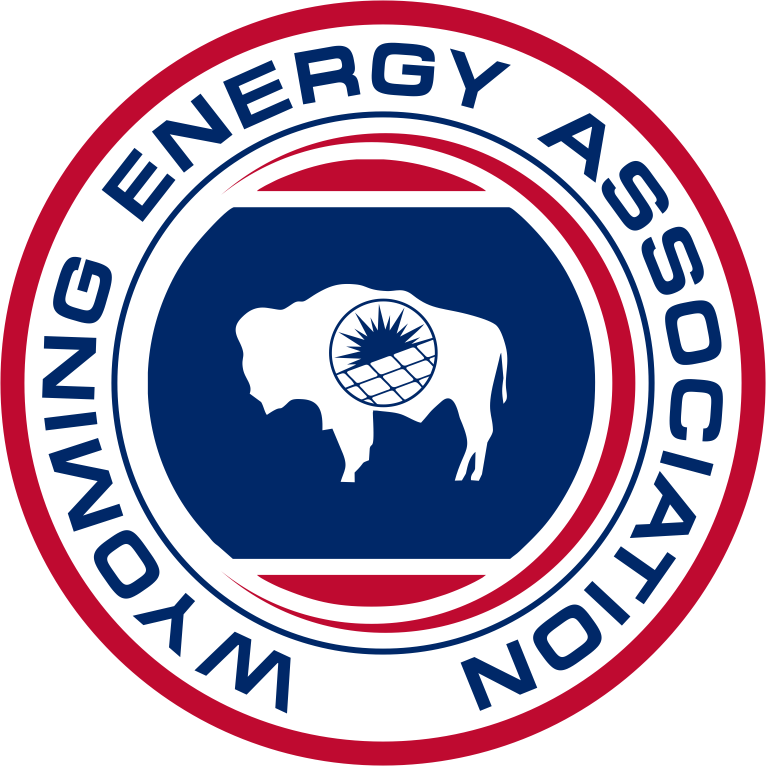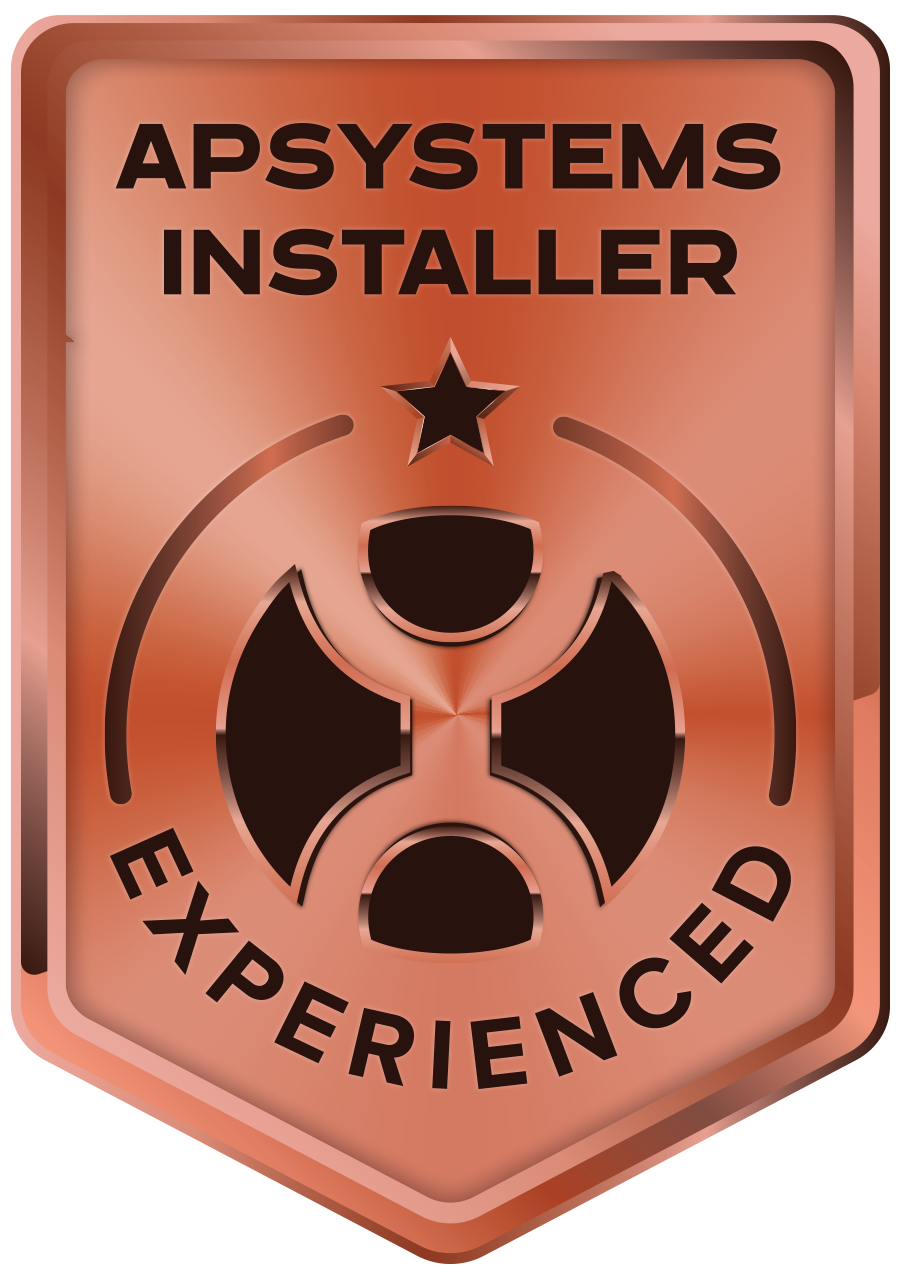The True Value of Solar Panels in Wyoming: A Homeowner's Guide
Are solar panels worth it in Wyoming? This is a question many homeowners in the Cowboy State are asking as energy costs continue to rise. The answer is a resounding yes, and here's why:
- Sunny Climate: Wyoming enjoys about 200 sunny days per year, making it an ideal location for solar power generation.
- Cost Savings: Homeowners can see energy bill reductions between 40% and 60% by switching to solar.
- Incentives and Tax Credits: While Wyoming itself doesn't offer state tax credits for solar, the federal tax credit of 30% significantly offsets the installation costs.
- Environmental Benefits: Switching to renewable solar energy helps reduce reliance on fossil fuels, diminishing your carbon footprint.
Why is Wyoming a good candidate for solar systems? Apart from abundant sunshine, the state's commitment to renewable energy resources improves its solar viability and rankings. Transitioning to solar can dramatically cut your energy expenses while boosting your property value.
My name is Spencer Gordon, CEO of Next Energy.AI, where we specialize in delivering sustainable solar solutions custom for Wyoming's unique climate. With my background in solar energy and commitment to eco-friendly practices, I assure you that installing solar panels in Wyoming is a smart investment, both financially and environmentally.
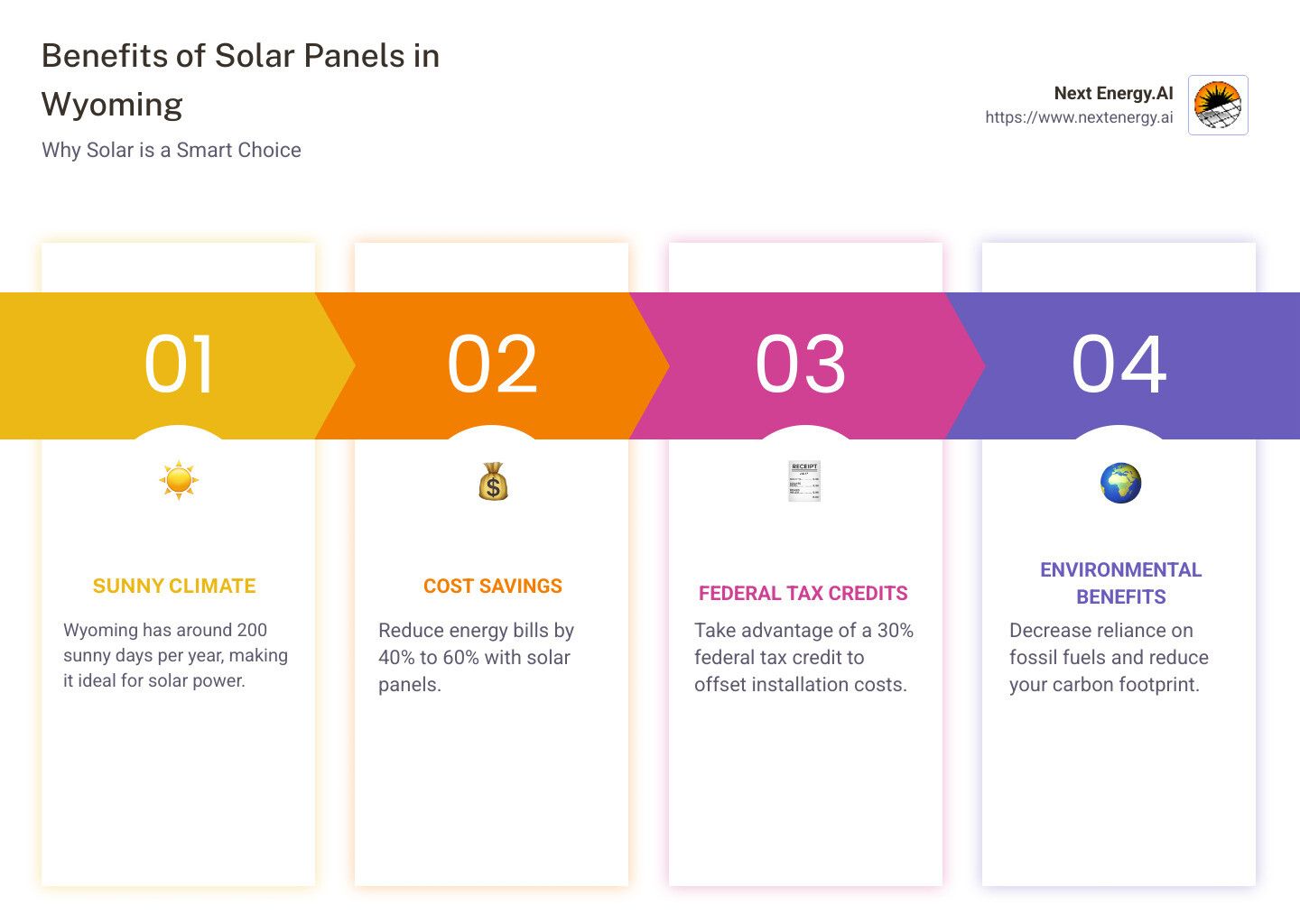
Are Solar Panels Worth It in Wyoming?
Understanding the Costs
When considering solar panels, understanding the costs is crucial. Let's break it down:
- Average Cost per Watt: In Wyoming, the average cost for solar panels is competitive compared to the national average. This means you get more value for every watt of solar power installed.
- System Size: The typical residential solar system ranges between 5 kW and 10 kW. The size you need depends on your energy consumption and roof space.
- Federal Tax Credit: A significant benefit is the federal tax credit. As of 2024, you can deduct 30% of your solar installation costs from your federal taxes. This makes solar more affordable and accelerates your return on investment.
Savings Over Time
Switching to solar in Wyoming isn't just about immediate savings—it's a long-term investment.
- Electricity Bill Savings: On average, homeowners save between 40% and 60% on their electricity bills. This can add up to substantial savings over the years, making solar panels a wise financial choice.
- Home Resale Value: Solar panels can increase your home's value. Studies show homes with solar systems sell at a premium compared to those without.
- Clean Energy Benefits: Beyond cost savings, using solar energy reduces your carbon footprint. By relying less on fossil fuels, you contribute to a cleaner, more sustainable environment.
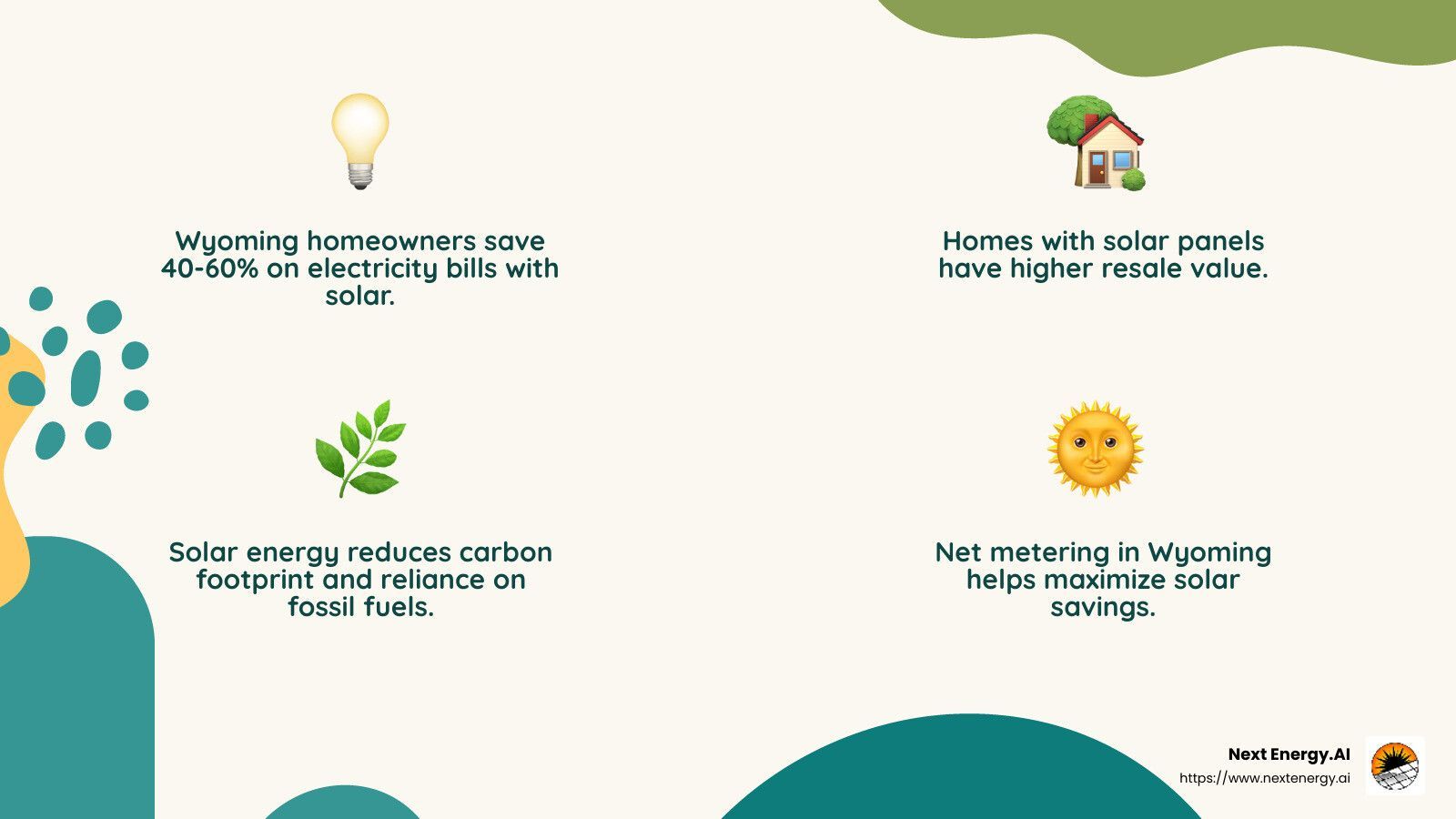
The Role of Net Metering
Net metering is a key factor in maximizing your solar savings. In Wyoming, net metering allows you to sell excess energy back to the grid. While the credits are at a wholesale rate, they still help reduce your overall energy costs.
Solar Payback Period: Typically, the payback period for solar panels in Wyoming is around 14 years. This means you'll recoup your initial investment in this time frame, after which the savings are essentially profit.
By understanding these factors, it's clear that solar panels are worth it in Wyoming. They offer both immediate and long-term financial benefits, alongside environmental advantages. With the state's sunny climate and available incentives, solar energy is a smart choice for Wyoming homeowners.
Factors Influencing Solar Panel Value in Wyoming
Net Metering and Incentives
Wyoming's sunny climate is a significant advantage for solar energy. With an average of 233 sunny days per year, your solar panels can produce more energy compared to states with less sunshine. This abundance of sunlight boosts the value of solar installations, making them a wise investment.
Net Metering Policies: Wyoming has a net metering policy that lets you sell excess energy back to the grid. However, the credits are given at a lower, wholesale rate rather than the full retail rate. While this isn't as favorable as some states, it still offers savings by reducing your energy costs.
Federal Incentives: The federal tax credit is a major incentive. As of 2024, you can deduct 30% of your solar installation costs from your federal taxes. This significantly lowers the initial cost and accelerates your return on investment.
Local Rebates: Although Wyoming doesn't offer many state-mandated incentives, some local utilities and programs may provide additional rebates or incentives. Always check with your local providers to see what is available.
Installation Considerations
System Size: The size of your solar panel system depends on your energy needs and the space available on your roof. Most residential systems in Wyoming range from 5 kW to 10 kW.
Installation Costs: The cost of installing solar panels in Wyoming is competitive. Installation prices include the cost of panels, inverters, and other equipment, as well as labor.
Labor Costs: Labor costs can vary based on your location and the complexity of the installation. It's important to get quotes from multiple installers to ensure you get the best deal.
Roof Condition: Before installing solar panels, assess your roof's condition. A roof in good condition is crucial for a successful solar installation. If your roof needs repairs, it's best to address these before installing solar panels.
By understanding these factors, you can better assess the true value of installing solar panels in Wyoming. The combination of sunny days, available incentives, and careful consideration of installation factors makes solar energy a compelling choice for Wyoming homeowners.
Frequently Asked Questions about Solar Panels in Wyoming
How Much Can I Save with Solar Panels?
Investing in solar panels in Wyoming can lead to significant savings on your electricity bills. On average, Wyoming residents can save between 40% to 60% on their monthly energy costs. This is thanks to the state's abundant sunshine and the efficiency of modern solar panel systems.
Utility Cost Avoidance: By generating your own electricity, you reduce your reliance on your utility provider. This means you avoid paying high utility rates, which can add up to substantial savings over time.
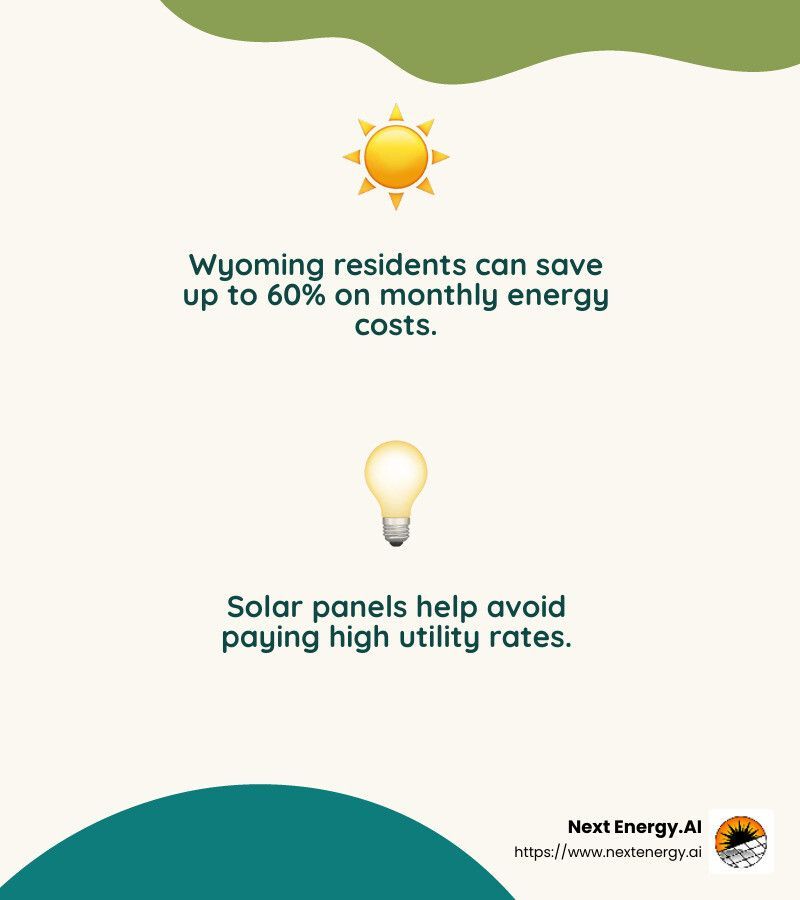
What is the Payback Period for Solar Panels?
The payback period for solar panels in Wyoming typically ranges from 10 to 16 years. This is the time it takes for the savings on your electricity bills to equal the initial cost of the solar installation.
Return on Investment: After the payback period, the energy savings contribute directly to your financial bottom line. Given that solar panels have a lifespan of 25 years or more, most homeowners enjoy many years of essentially free electricity after their system has paid for itself.
How Does Net Metering Work in Wyoming?
Wyoming's net metering policy allows homeowners to send excess solar energy back to the grid. This energy is credited to your account at an "avoided cost" rate, which is lower than the retail rate you pay for electricity.
Credit Rates: While the credit rate is lower than in some other states, it still reduces your overall energy costs. At the end of each year, any excess credits are purchased by your utility provider, though again at the lower wholesale rate.
Utility Providers: Not all utility companies in Wyoming offer the same net metering terms. It's important to check with your specific provider to understand their policies and how they will affect your solar savings.
By understanding these aspects of solar savings, payback periods, and net metering, Wyoming homeowners can make informed decisions about the potential financial benefits of solar energy.
Conclusion
Investing in solar panels in Wyoming offers numerous long-term benefits that make it a smart choice for homeowners. With the state's abundant sunshine and supportive policies, solar energy can significantly reduce your electricity costs and increase your property's value.
Next Energy.AI is at the forefront of this solar revolution. Our AI-improved solar solutions transform traditional solar panels into intelligent energy management systems. This means better efficiency and greater savings for you. By integrating advanced AI technology, we optimize your energy usage, ensuring you get the most out of your solar investment.
Choosing solar energy is not just about saving money—it's about making a sustainable investment in your future. The federal tax credit, which covers 30% of installation costs, makes going solar even more affordable. Over time, the savings on your electricity bills and the increase in your home's resale value more than compensate for the initial investment.
Looking ahead, the long-term benefits of solar energy are clear. With a typical payback period of 10 to 16 years, you can enjoy many years of free electricity once your system has paid for itself. Plus, by reducing your reliance on fossil fuels, you're contributing to a cleaner, greener planet.
Ready to take the next step? Explore our services to see how Next Energy.AI can help you harness the power of the sun and secure a brighter future for your home.


